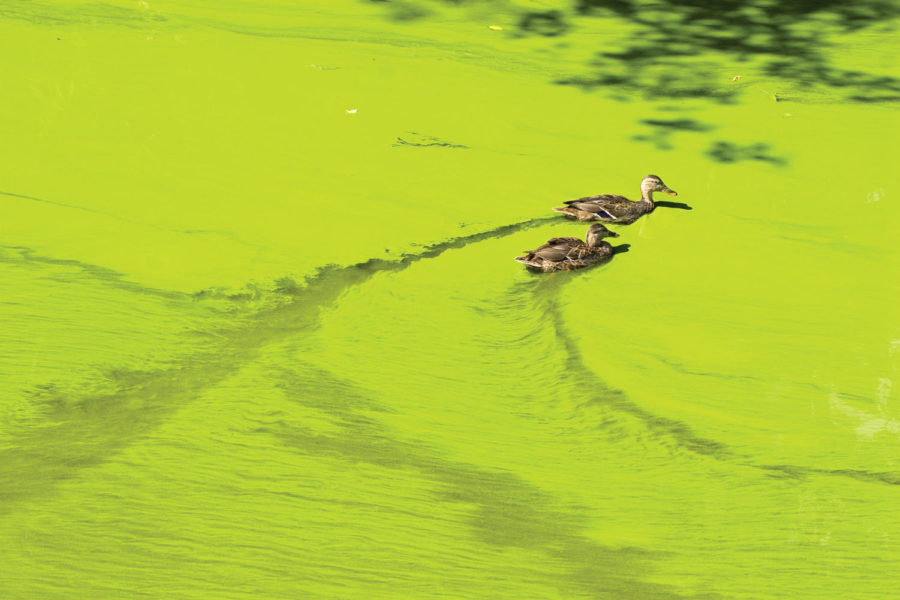Ellingson: Algal blooms can be harmful
Algal blooms, both toxic and nontoxic, are becoming increasingly common and pose a serious threat to humans and other ecosystems. The best way to combat algal blooms is to reduce pollution levels.
April 29, 2013
Harmful algal blooms are becoming more and more prevalent in waters all over the world, and while their bright colors might look pretty, they can negatively affect humans and wildlife everywhere. In recent years, the number of algal blooms worldwide has been increasing at a rapid rate. They are happening more frequently, lasting longer and are covering more area overall.
Algae are single-celled organisms that multiply very quickly in warm water rich in oxygen and can survive in both freshwater and saltwater environments.
There are approximately 400 species of microscopic algae in the oceans and at least 300 are connected to algal blooms. This is when a species of microalgae or phytoplankton goes through a period of excessive growth that basically creates a monoculture in the aquatic area. It can turn the surface of the water various colors, such as red, brown, yellow, green or white, and if the microalgae contains toxic or harmful properties, they are cleverly called harmful algal blooms.
While not all algal blooms are toxic, there are about 40 species that produce toxins that can harm humans and other organisms through inhalation, digestion of shellfish, contaminated water or skin contact. Symptoms can include memory loss, nausea, stomach cramps, amnesia, liver damage, convulsions, impacted heart and kidney function, paralysis and even fatality. Aquaculture in the United States has seen harmful algal blooms in areas along the West Coast, Great Lakes and other bodies of water. People all over the world are affected by algal blooming; it can even affect those of us in Iowa directly or indirectly.
Other species of algae might not produce toxins, but some can affect marine life in ways that include producing barbs, which destroy gill tissues, or damaging the food supply for other creatures. Still others are essentially very passive, except for the fact they can deplete the oxygen supply in the water — leaving less oxygen for marine life that needs it and could eventually suffocate and die from lack of oxygen. These areas of oxygen-depleted water are called dead zones.
Humans might be playing an important role in the rapid algal blooming due to their interactions with the environment through agriculture, mining and sewage outfalls. The excess nutrients in the water from runoff can create a perfect environment for phytoplankton to thrive. Climate change and the human activity associated with it can also be creating ideal environments for growth because of the warmer temperatures of the water.
In addition, these effects are increasing every day due to the overall human population growing at an exponential rate and the growing amount of wastes produced.
Some of the worst algal blooms can be attributed to humans. One scenario happened off the British Columbia coast in Canada, where a man dumped 220,462 pounds of iron sulfate into the Pacific Ocean in an attempt to increase salmon populations. It resulted in intense algal blooming that spanned an area of 3,861 square miles, large enough it can be seen from space using satellite images. Other cases of massive algal blooming happened in Lake Erie in 2011, when it experienced one of the worst blooms in recorded history as the blue-green algae spread along the Canadian and U.S. shores from Toledo, Ohio, to beyond Cleveland and extended into the water as far as 60 feet down.
There are no easy treatments for algae blooms. The best ideas are to educate people on the effects and use preventative strategies based on the information collected so far. The main way to reduce the number of algal blooms is to simply reduce the pollution levels on the planet. Excess nutrients and runoff can be maintained or limited if we put in more effort to protecting these ecosystems.
Caitlin Ellingson is a senior in journalism and mass communication and environmental studies from Milo, Iowa.

















